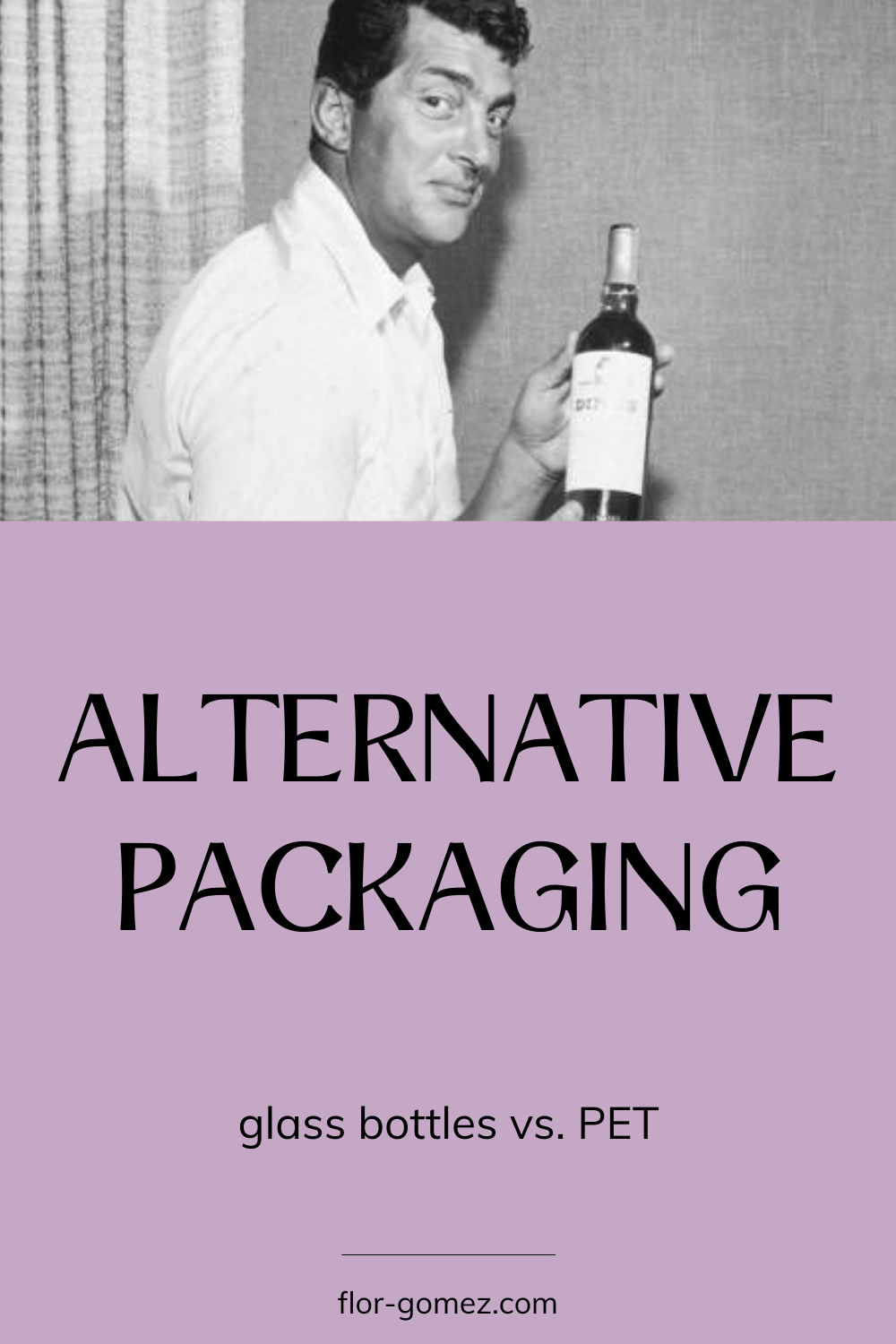Alternative packaging Glass vs. Pet Bottles
Our planet’s health is on the decline. A harsh sentence, yet it couldn’t be put differently. Does it mean we’re collectively doomed? If we take action now, hopefully not! When it comes to the world of modern wine, wineries can make several choices to act in the right direction for the environment. And, with a bit of smart wine marketing, simultaneously attract new consumers. A sweet deal!
Adjusting winemaking practices, the means of transport and delivery are all fields in which we can make greener choices. However, packaging accounts for one-third of our total climate impact. In other words, this is an area where we can make a significant difference. The wine industry has deviated from tradition, and to stay relevant, wineries should keep in touch with packaging trends. In this article, you’ll see how glass bottles aren’t all they're cracked up to be, and read about some advantages of PET plastic when it comes to production, price, durability, and customizability.
Are you ready to join the climate-smart packaging movement? Keep reading!
What’s wrong with glass bottles?
We’ve come a long way from amphorae. Round and with long necks, glass bottles have been the standard in the wine industry for the last 300 years. Luxury, prestige, sophistication – all those spring to mind when we see a beautiful, heavy wine bottle. But, it’s time to change that for our planet to thrive.
Glass is one of the worst materials for drink packaging. Not only does it take a lot of resources to produce, but also, due to the need for high temperatures, glass production requires more energy, and in turn, uses more fossil fuels. On top of that, glass releases carbon dioxide in that process. We don’t even have to talk about glass bottles shattering in the transport. To prevent the damage, additional packaging is needed, which results in excess waste.
But wait, there’s more. You’ve probably heard of the myth about the heavier the bottle, the better the wine. This is a myth for a reason. The only thing that heavy glass does is increase the cost of transportation, together with increasing fossil fuel needs. All things considered, it’s time we found a new perspective. A good wine preserves its quality even in a lighter glass bottle, or a bottle made from recycled glass. But why stop at recycled glass bottles? They may be better than regular glass bottles, but there are even more efficient and cheaper materials. Allow us to introduce you to the future of wine packaging: PET plastic.
What’s so good about PET plastic?
Plastic? In the wine industry? We know, we know, it sounds almost… cheap. Because it is! The difference between producing glass and PET is not that significant, but the real difference lies in the cost of transport. According to the Cambridge–MIT Institute, up to 40% less fuel is used to transport drinks in plastic bottles compared to glass bottles. This is perfect for all wineries whose wine marketing strategies are directed at the millennials because the cost of transport plays a role in price, and everyone knows the millennials love to pinch a penny. Really, they are more likely to purchase “cheap” wine; they aren’t that interested in expensive vintage bottles.
Other than the price, the factor that makes PET bottles more attractive is their durability. Glass shatters easily, while PET packaging is durable and impact-proof. And since millennials and Gen Zers are big on labels, design, and customization, PET plastic bottles are a great choice for wineries trying to differentiate themselves from their competitors. PET has greater flexibility compared to glass, which allows for limitless options of shape and design. The looks don’t have to suffer at all; PET is admittedly not as transparent as glass, but companies have now mastered the ways of hiding the cloudiness by tinting bottles in appropriate colors for different types of wine. Basically, wineries can opt for well-made imitations of glass bottles, or go for something entirely new and different!
***
It would be irresponsible to claim PET plastic has no flaws. Everything does (except for our Flor Gomez’s wine marketing skills, of course!). However, in the wine industry, PET plastic is a winner. It is more cost-effective to produce and transport. This makes the price of the final product more affordable, which is great for attracting millennial consumers. Younger generations also favor products that stand out with their design, and PET allows wineries to be distinctive in terms of shape, size, and design. No more blending in with the competition! Also, the durability of PET packaging helps cut down on additional packaging materials usually used to transport glass bottles. All in all, the advantages of using PET packaging for wine outnumber those of glass packaging. For all wineries new to the area of PET packaging or those who need any guidance, our inbox is always open. We’re looking forward to creating fantastic packaging with you!
Creative wine marketing
Are you looking for the best wine marketing ideas? Let's craft a creative marketing strategy that makes your wine brand stand out!
